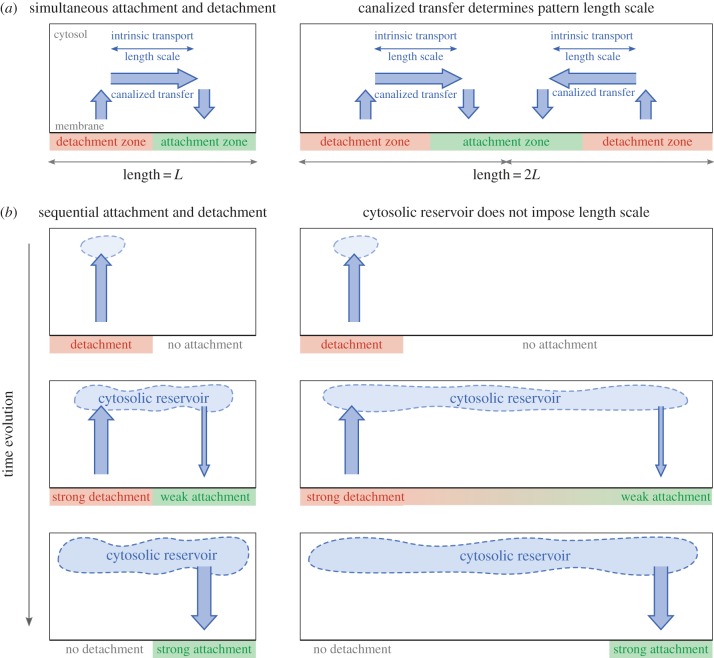Figure 7.
Canalized transfer of MinD imposes a length scale intrinsic to the reaction–diffusion dynamics in the model developed by Halatek & Frey [30]. (a) Canalized transfer refers to the case where attachment flux and detachment flux are of similar magnitude such that the cytosolic density does not vary (left). To maintain the flux between the detachment and the attachment zone, a cytosolic gradient must be maintained. The length scale of this gradient dictates the distance between attachment and detachment zones independently of system size. Thus, canalized transfer can give rise to patterns with an intrinsic wavelength in large systems (right). (b) If a detachment zone forms when no attachment zone is available, the detaching proteins fill up a cytosolic reservoir. Once the reservoir reaches a critical density, an attachment zone will form. In this case, no length scale between attachment and detachment zones is set, because both zones exchange proteins through a (uniform) cytosolic reservoir.

